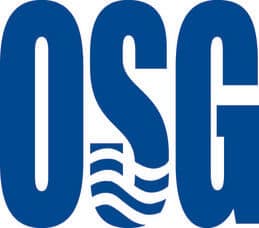
By Pat Stout
Overseas Shipholding Group is a member of the Dow Jones Transportation Index and has fallen on hard times. The 52-week range for the common stock has been $28.86 to $7.86 and closed June 11th at $10.01 according to Yahoo Finance. Those considering betting on a turnaround with a purchase of OSG Common Stock, might want to have a look at Overseas Shipholding Group bonds instead.
As a creditor to the company you have more downside protection than an equity investor, and should the company turn the corner, the bonds should offer equity like returns as well. As a bondholder you are also paid while you wait for the turnaround. The more risk inclined investor may consider creating a custom convertible by using the interest cash flow to purchase the common stock.
About OSG from the more recent SEC filing:
We are one of the world’s leading tanker companies engaged primarily in the ocean transportation of crude oil and petroleum products. As of March 31, 2012, we owned or operated a modern fleet of 113 vessels (aggregating 10.8 million deadweight tons and 864,800 cubic meters) of which 91 vessels operated in the international market and 22 operated in the United States (“U.S.”) Flag market. Our newbuilding program of owned vessels totaled 2 International Flag vessels, bringing our total owned, operated and newbuild fleet to 115 vessels as of March 31, 2012.
The not so good news:
- January 2012 Standard & Poor’s downgraded the long-term debt rating from B to B- with a negative outlook.
- December 2011 Moody’s downgraded the long-term debt from B2 to Caa1 with the outlook changed from stable to negative.
- Both agencies attributed the downgrades to significant declines in the Company’s revenue and earnings from vessel operations resulting from the prolonged weakness in the tanker markets and increases in the Company’s leverage. Further increases in debt, whether from share repurchases, acquisitions or additional charter-in commitments could result in additional downgrades as could a continuation of the protracted downturn in freight rates.
Source data: 10-Q for March 31, 2012
The better news:
On February 9, 2012 the board suspended the dividend. This is positive news for fixed income investors. It demonstrates that the board is taking prudent fiscal action and is more concerned with the long-term health of the firm and short-term demands of stockholders.
Bond Details:
The 8.125% issue
Issue Date: March 24, 2010
Issue Price: 98.563
Size: $300 million
Cusip 690368AH8
Maturity Date: March 30, 2018
Details at FINRA
Prospectus is here
Key details:
Upon a “Change of Control Triggering Event,” which requires both a “Change of Control” and a “Rating Decline” (each as defined in “Description of Notes—Certain Definitions”), we will be obligated to make an offer to purchase all outstanding notes at a redemption price of 101% of the principal amount thereof plus accrued and unpaid interest to the date of purchase. Please read “Description of Notes—Covenants—Repurchase of Notes Upon a Change of Control Triggering Event.”
The 7.50% issue:
Issue Date: February 13, 2004
Issue Price: 100.000
Size: 150 million
Cusip: 690368AG0
Maturity Date: February 15, 2024
Details at FINRA
Prospectus is here.
Key details:
Upon a Change of Control, we will be required to make an offer to purchase all Notes then outstanding at a price equal to 101% of the principal amount thereof, plus accrued and unpaid interest, if any, to the date of purchase. See information set forth in the accompanying prospectus under the caption “Description of The Debt Securities—Change of Control.”
Be aware that the FINRA site has some data issues.
For example it is showing the Original Issue Yield to Maturity at 15.234%, which for a 7.50% bond priced at 100 is not accurate. Here is a screen shot:
Worst case:
Should OSG be unable to regain traction then the common stockholder might fair worse than bondholders. The stockholders may face dilution should addition stock be issued or a more severe haircut or total loss should business conditions get worse. Bondholders may enjoy coupon payments and or become the majority equity owners should the firm be unable to make interest and or principal payments. Generally bondholders do not want to become equity owners. Though in this situation bondholders may have an opportunity to enjoy equity like returns.
Better case:
OSG regains traction and business conditions improve. This may require better worldwide economic conditions and or a pickup in trade. This might result in credit rating upgrades, reducing the spread versus treasuries. This might lead to higher bond prices. The common stock may perform well under this case.
The more risk inclined investor may consider creating a custom convertible by using the interest cash flow to purchase the common stock.
More recent trade prices, per FINRA
Common stock
$11.75 May 25, 2012
$10.02 June 01, 2012
8.125% due 03/30/18
$73.847, 15.000% YTM, 11.0% current yield May 25, 2012
$70.000, 16.289% YTM, 11.6% current yield June 1, 2012
7.500% due 02/15/24
$64.890, 13.500% YTM, 11.5% current yield
$59.500, 14.910% YTM, 12.6% current yield
Bond Risk:
The bonds most likely will be hard to trade with generally wide bid-ask spread. It is a high yield issue. This analysis reviewed the bond vs. the common stock. The industry and company specific conditions have not been considered. Some more recent financial information is shown below. Investors should review the bond prospectus and more recent financial filings before making any decision.
|
Year Ending |
Revenue |
Net |
Interest Expense Excl Capitalized Interest |
Interest Expense % Revenue |
|
2011 |
1,049,531,000 |
(192,916,000) |
84,054,000 |
8.01% |
|
2010 |
1,045,610,000 |
(134,243,000) |
59,689,000 |
5.71% |
More recently OSG filed a S-3 to offer up to $500 million in common stock, preferred stock, debt securities, warrants, and or units.
The article was to explore and analyze the different issues within the capital structure of OSG and is for information use only. This is a high-risk issue.
Click here to learn more about best forex brokers.
Trusted & Regulated Stock & CFD Brokers
What we like
- 0% Fees on Stocks
- 5000+ Stocks, ETFs and other Markets
- Accepts Paypal Deposits
Min Deposit
$200
Charge per Trade
Zero Commission on real stocks
64 traders signed up today
Visit Now67% of retail investor accounts lose money when trading CFDs with this provider. You should consider whether you can afford to take the high risk of losing your money.
Available Assets
- Total Number of Stocks & Shares5000+
- US Stocks
- German Stocks
- UK Stocks
- European
- ETF Stocks
- IPO
- Funds
- Bonds
- Options
- Futures
- CFDs
- Crypto
Charge per Trade
- FTSE 100 Zero Commission
- NASDAQ Zero Commission
- DAX Zero Commission
- Facebook Zero Commission
- Alphabet Zero Commission
- Tesla Zero Commission
- Apple Zero Commission
- Microsoft Zero Commission
Deposit Method
- Wire Transfer
- Credit Cards
- Bank Account
- Paypall
- Skrill
- Neteller
What we like
- Sign up today and get $5 free
- Fractals Available
- Paypal Available
Min Deposit
$0
Charge per Trade
$1 to $9 PCM
Visit Now
Investing in financial markets carries risk, you have the potential to lose your total investment.
Available Assets
- Total Number of Shares999
- US Stocks
- German Stocks
- UK Stocks
- European Stocks
- EFTs
- IPOs
- Funds
- Bonds
- Options
- Futures
- CFDs
- Crypto
Charge per Trade
- FTSE 100 $1 - $9 per month
- NASDAQ $1 - $9 per month
- DAX $1 - $9 per month
- Facebook $1 - $9 per month
- Alphabet $1 - $9 per month
- Telsa $1 - $9 per month
- Apple $1 - $9 per month
- Microsoft $1 - $9 per month
Deposit Method
- Wire Transfer
- Credit Cards
- Bank Account



